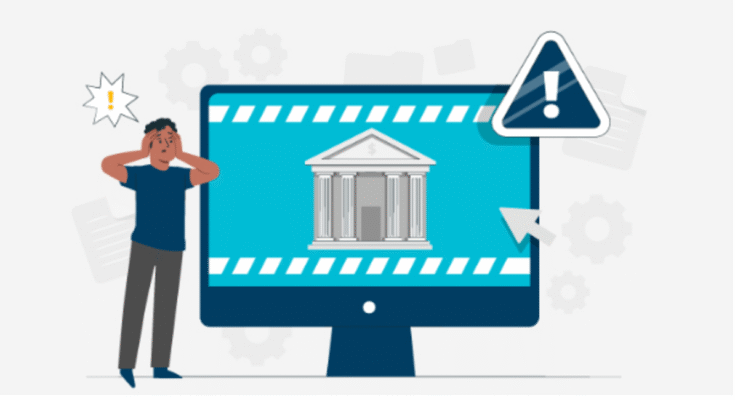Banking today feels easy. Swipe a card, manage finances via an app, or deposit a check with a quick photo. But here’s the thing — that speed and ease come with hidden risks.
Mistyping an account number, signing a check the wrong way, or oversharing sensitive information can trigger costly delays, fees, or worse, fraud.
That’s why understanding details like the account number on check book and even how to sign back of check matters more than people realize.
The Details People Overlook
Banking errors rarely happen because people don’t care. They happen because people assume.
- Assume the account number isn’t that important.
- Assume signing a check is just scribbling your name.
- Assume sharing info with “trusted” people is fine.
- Assume mailing or delivering checks casually is safe.
- Assume consistently monitoring your statements isn’t that important.
- Assuming banks will refund everything in case of a mishap.
But money doesn’t work on assumptions. It works on precision. And that’s where mistakes creep in.
Why Your Account Number Matters
Let’s start with the basics. That string of numbers printed at the bottom of your checks? One of those is the routing number (tied to your bank).
The other is your account number on check book — the unique ID that ties transactions directly to you.
If someone has access to that number, they don’t need much else to mess with your finances. Checks, drafts, unauthorized withdrawals — it’s all possible if you’re careless.
That doesn’t mean you panic every time someone sees a check. It just means:
- Keep your checkbook in a safe place. This reduces the chance of theft or unauthorized access.
- Don’t post pictures of checks online (yes, people do this). These “celebratory” or “voided” images can be harvested for fraud.
- Avoid giving info over calls, emails, or texts unless verified.
- Use multi-factor authentication (MFA) and strong passwords
- Know how to read and recognize your own account info so you can spot errors before they cost you.
Endorsing Checks: More Than a Signature
Checks aren’t as common as they used to be, but when they do show up — think refunds, insurance claims, payroll for some industries. And when they arrive, knowing how to sign back of check properly is vital.Why does it matter? Because the endorsement is what authorizes the bank to process it. Sign wrong, and:
- The check could bounce back.
- Funds could get delayed.
- Worse, if the endorsement leaves room for misuse, someone else could attempt fraud.
A clean endorsement isn’t just about writing your name. It’s about making sure you follow your bank’s instructions:
- Blank endorsement (just your signature) — simplest, but riskiest if the check is lost as anyone in possession could deposit or cash it.
- Restrictive endorsement (e.g., “For deposit only often followed by your account number”) — safer, directs funds into your account only.
- Endorsing to someone else — possible, but only if you really know what you’re doing (and trust the person).
The Risks of Carelessness
People underestimate how quickly things can spiral beyond their control:
- Leaving checks unsigned in your bag makes it vulnerable to theft, alteration, or misuse.
- Tossing old checks in the trash without shredding? A goldmine for fraudsters to commit check washing, fabricate fake checks, or steal sensitive details.
- Sharing your account number casually over email can open the door to unauthorized withdrawals, fraudulent drafts, or identity theft.
Banks have protections, yes, but they’re not instant. Fixing fraud takes time. And in that time, your money — and peace of mind — are tied up.
Everyday Habits That Protect You
Building safe habits doesn’t take much effort, but it saves a ton of hassle later.
- Double-check details. When writing a check, confirm routing and account numbers match. An error can result in processing delays or misrouted funds.
- Secure your checkbook. Treat it like cash. If it’s lost, assume the info is compromised.
- Endorse carefully. If you’re unsure how to sign back of check, ask your bank. Better safe than sorry.
- Shred, don’t trash. Old checks and statements should never just go in the bin. Fraudsters can retrieve them and potentially defraud your account.
- Stay alert. Monitor your account regularly so you catch issues early.
- Avoid Public Wi‑Fi for Banking. They lack encryption and are easy targets for interception. Bank only on trusted, secure networks—or use your phone’s hotspot.
Checks in the Digital Age
With online transfers, cards, and payment apps, checks feel outdated. But they’re not gone. Some businesses still use them.
Some landlords still prefer them. And sometimes, it’s the only method a company offers for refunds or disbursements.
That’s why understanding the basics — like identifying your account number on check book or endorsing correctly — is still relevant. Even one mistake on a check can slow down money you need quickly.
Real-World Scenarios
Here’s what these mistakes can look like in real life:
- Mismatched account number. A customer writes the wrong account number on a deposit slip. Funds are delayed for days while the bank sorts it out.
- Improper endorsement. Someone signs a check without adding “For deposit only.” The check gets lost, and technically, anyone could try cashing it.
- Oversharing. A person emails their account number unencrypted. A scammer intercepts the message. Fraud follows.
These aren’t “rare exceptions.” They happen every day.
Final Thoughts
Banking errors don’t always involve hackers or elaborate scams. More often, they come from simple oversights — not knowing the role of an account number on check book or ignoring the rules for how to sign back of check.
Protecting your money means slowing down, double-checking details, and treating account info like the sensitive data it is. A few smart habits today keep your money safer tomorrow.




